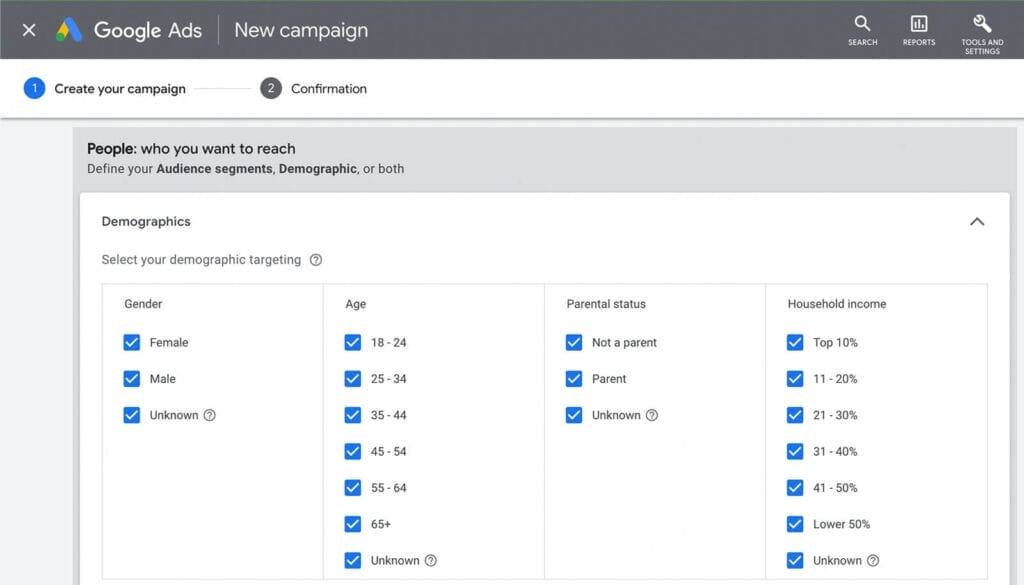Facebook Ads and Google Shopping Ads rank as the top two most popular online advertising methods. They bring in traffic, generate leads, and enhance sales—you name it! More than 44% of merchants incorporate them into their eCommerce empires.
Yet again, each of these platforms works completely differently. Their targeting features, as well as costs, the ads on Google Shopping and Facebook are so different that as a marketer, you need to pay attention to these specifics in order to achieve your business targets.
Let us now turn to the discussion of Google Shopping and Facebook Ads. This blog outlines the key differentiating features between these platforms in order to assist Shopify merchants such as yourself in selecting the most appropriate one for advertising campaigns.
Understanding Google Shopping ads
Around 1.2 billion purchases are searched for every month across the globe on Google alone. When you look something up on Google, the chances are that you will see Google Shopping showcasing relevant ads on the SERP. Those are referred to as Product Listing Ads (PLAs) or Google Shopping Ads.

Compared to Google Search Ads, Google Shopping Ads are more appealing visually, as they list more details about the product and feature on only a few Google Ads networks.
Is that the only option available for selling products on Google?
Definitely not. There are many other advertising formats on the platform that could fit in your marketing plan:
- You can create Smart Shopping ads, which are a more automated variation of the shopping ads.
- You can also create paid search display ads, which help get your brand more top-of-funnel awareness but often don’t feature products that show intent to buy, like the term “Nike shoes size 6.”
- YouTube video ads can help build initial brand recognition for your store or a new offering.
- Performance Max ads, the newest type, enable advertisers to display their video, display, and image ads to the broadest audience possible without restrictions.
Google Shopping Ads may be the best option when looking for users who are actively looking to purchase products, as they primarily focus on keywords; however, all the other Google Ads formats have their place too in your broader, more comprehensive plan, depending on the budget and goals that you have for your business.
Understanding Facebook ads
Facebook Ads (now Meta Ads) refers to paid advertising social marketing that integrates into the entirety of Meta. This includes Instagram and WhatsApp, which are managed through a singular Facebook Business Manager.

Similar to Google Ads, Facebook Ads makes it unbelievably simple for an individual or company to carry out high ROI online shopping campaigns through their ad platform. There is a wide variety of ad types that work exceptionally well for advertising your online store:
- Carousel ads enable you to display several individual products in a single ad so customers can scroll through and view your products.
- Catalog ads also do the same; however, they do it dynamically by directly linking to your online store with a product feed, similar to Google.
- Collection ads that allow a user to have a mini online shopping experience incorporate carousel and video ads.
- Instant experience ads that actually do function as a mini landing page.
- Video ads enable you to capture attention, create brand awareness, and redirect traffic to your website.
Distinction between Google Shopping and Facebook Shopping Ads
I will highlight the distinctive features of Facebook Shopping Ads and Google Shopping Ads in the comparison that follows so you can choose what platform is ideal for your business objectives.
Target Audience
Google Shopping advertisements aim to attract people already close to making a purchase; in this case, someone using Google is already looking for products. For a standard Google Shopping advertisement campaign, only keywords and search intent are available for targeting.

However, with Performance Max campaigns or YouTube campaigns with products, targeting becomes broader and includes audience demographics (similar to Facebook). Google also has some audience types that are not available on Facebook.

The wide range of users available, coupled with the different targeting capabilities, allows marketers to create Facebook ads aimed at users who are not actively looking for something but can be interested based on their digital footprints. Accessing different kinds of audiences on Facebook allows effective brand and customer acquisition.
Costs and ROI
As stated previously, Google Shopping ads are paid for on a cost-per-click (CPC) basis, where you incur expenses only when a user clicks the ad. The CPC rate increases with the level of competition for specific, commonly used keywords. On the other hand, the elevated purchase intent among users frequently leads to a higher conversion rate, which ultimately results in a positive return on investment (ROI).
Facebook Ads can also have different bidding ranges like CPC or cost-per-thousand-impressions (CPM). Although Facebook CPCs are normally cheaper than Google’s, the conversion rates usually depend on the audience and the stage of the buying funnel they are in.
Ad Formats
Google Ads and Facebook ads are similar in that they offer distinct ad formats according to the marketing goals set to be achieved.

Google Shopping ads depend on visually appealing product listing advertisements that feature an image, title, price, and name of the store. These ads appear alongside Google search results, enabling the user to view relevant products and prices simultaneously. It should be noted that Google Ads has multiple ad formats that are designed for distinct advertising objectives and different types of campaigns (video ads, display ads, etc.).

Facebook Ads incorporates many types of ads, such as Meta Advantage+ catalogue ads, image ads, video ads as well as carousel ads, and many others. This flexibility allows advertisers to promote their goods and services in a number of appealing formats, like embedding multiple photographs or videos into a single ad. In addition, Facebook ads feature social engagement components like ‘likes,’ comments, and shares that may also improve the effectiveness and coverage of the ad.
Conversion Tracking
Google and Facebook offer powerful conversion tracking for both platforms. With Google Shopping Ads, you may track clicks, impressions, and conversions and check the performance of your ads.
With Facebook Ads, there’s engagement and conversion tracking, and they go as far as providing post-engagement conversions, which is when users perform actions after seeing your ads.
How to Set Up Google Shopping and Facebook Ads?
Google Shopping Ads:
An advertising campaign on Google Shopping can be initiated in the following ways:

- Open a Google Merchant Center account—GMC account.
- Now, you will need to create a product feed, which will be done either manually or using automation processes. After the product feed is created, upload it to Google Merchant Center (GMC).
- To create a Google Shopping Ads campaign, first open a Google Ads account.
- Afterwards, log into your Google Ads account and click on “Switch to Expert Mode.”
- Then, for setting up a Google Shopping ad, click on “Sales” and then click on Shopping, and then enter your GMC account.
- You will need to choose from one of the two Google Shopping ad campaign types available to you and they are Standard Shopping and Performance Max.
- When that is done, click on “Continue.”
- Now, choose your preferred bid strategy, which can be either manual CPC or target ROAS or maximize clicks, and also set your campaign budget.
- Select the campaign priority that is exact for your campaign, which can be low, medium, or high.
- You will be given additional options to select regarding the placement of your Google shopping ads as well. Select what is best suited for your campaign type.
- Type in the name for your ad campaign and proceed by clicking on the “Create Campaign” option.
Facebook Ads:
Use the following guide to set up a Facebook Ads campaign:

1. Set up a Facebook Ads Manager account by creating a Facebook Business page.
2. After completing this step, go to the list of ad types and choose from video ads, Facebook carousel ads, or any others offered and select the “Create” option to open a new ad campaign.
3. Next, decide your ad objective, be it building brand awareness or engagement, or anything else you desire.
4. Configure a budget and schedule for your ad campaign.
5. After that, choose the targeting for your ad. You can select the location, gender, age range, occupation, and other information of the people you wish to target.
6. At this stage, you can choose your preferred ad format to set up the campaign, such as images, videos, slideshows, carousels, collections, instant experience, and many more.
7. Lastly, add reporting to track your general analytics.
Google Shopping vs. Facebook Ads for eCommerce—what do the numbers say?
Each platform has both strengths and weaknesses, but as I said earlier, with the right approach, you can mitigate most of the disadvantages we have pointed out. That is a big opportunity with each platform. Which one should you choose? Your business goals, digital advertising budget, preferred management style of advertising campaigns, and level of comfort with the platform will determine the answer.
The good news is that you do not need to choose one over the other.
A well-crafted digital marketing campaign will take advantage of all available platforms. In truth, you can divide your ad campaigns across the two platforms and target various stages of the customer lifecycle. How, you say? That’s a very good question.
Conclusion
Given the budget and marketing goals of a business, the decision to use Google Shopping Ads versus Facebook Ads will differ. Google Shopping Ads are particularly effective for e-commerce businesses that wish to convert search-based queries into direct purchases due to their goal-oriented nature. On the other hand, Facebook Ads gives an opportunity to ‘hook’ potential customers through eye-catching, audience-specific content. Each has its own advantages that can be used together in a cohesive marketing plan. Assess the business’s requirements and consider employing both advertising strategies to offer a greater scope and impact within the digital marketing strategy.

